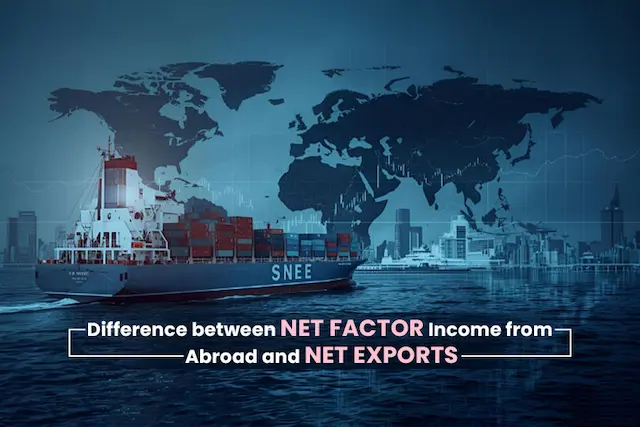With global trade becoming increasingly competitive, Indian exporters are seeking wiser methods of not straining cash flow in financing their operations. Selecting the appropriate financial tool can make a difference between a successful transaction and a missed opportunity–especially in the manufacturing, agriculture, or exporting of premium machinery. Export leasing, structured finance, and traditional loans constitute some of the most talked-about options in the present times.
All these financing options come with their respective benefits; however, to know which one will fit you the most, you need to understand how they work and affect growth in the long-term view.
What Is Export Leasing?
Export leasing is the alternative to selling the equipment or machinery to the foreign buyer, but instead leasing it to them. Ownership remains with the exporter, who also leases out the asset to the buyer to utilise during a specified duration of time in agreement with frequent payments.
This model is particularly famous in export, which is capital-intensive, such as engineering equipment, medical devices, and transport systems.
Key Features –
- Fixed tenure (usually 3–7 years)
- Exporter retains ownership
- Payments are made in foreign currency
- Lower upfront cost for the importer
- Tax benefits for both parties in certain jurisdictions
Export leasing allows Indian firms to expand their business in foreign countries without having to own or put themselves into excessive credit risk. It is also a model that promises future relationships and recurring revenue.
What Is Structured Finance?
Structured finance is a specialised financial product applicable to large and complicated transactions, and commonly involving different parties, products, and jurisdictions. It is mostly utilised in infrastructure, power, and high-risk export markets.
Some of the common instruments under structured finance are –
- Loans underwritten by export credit agencies.
- Receivables-backed financing
- Special purpose vehicles(SPVs)
- Syndicated loans
Why Use Structured Finance?
- Originally designed for specialty risk and long repayment periods
- Sponsored in many cases by government or multilateral institutions
- Dilutes the strain of high-value exports on working capital
- Assists in taking care of political or currency risk in overseas markets
In case of long-term projects with high ticket value involving Indian exporters, structured finance will open up massive transactions. It provides a safety net built into the transaction and a willingness to realign cash flow.
Traditional Loans: The Familiar Route
Traditional business financing is the main source of funds for most small and medium-sized exporters. They are simple term loans or working capital loans availed with the banks and NBFC, normally based on the credit record, the balance sheet, and the company’s business plan.
Features of Traditional Export Loans
- Secured or unsecured loans
- Tenure ranging from 1–5 years
- Interest rates based on credit profile and RBI guidelines
- Simple application process
Traditional loans are fast and familiar to the exporter who has a sound credit and transaction simplicity. They might, however, not always align with the timelines and risks of international trade.
Comparing the Three Financing Options
| Feature | Export Leasing | Structured Finance | Traditional Loans |
| Ownership | Retained by the exporter | Shared or external SPV | Borrower owns the asset |
| Flexibility | Moderate | High (custom-tailored) | Low to medium |
| Risk Management | Lower for the buyer | Built-in risk mitigation tools | Risk on the borrower |
| Ideal For | Capital goods, tech exports | Large infrastructure or long-term deals | General exports, working capital |
| Funding Time | Moderate | Longer (structured setup) | Fastest among the three |
| Cost | Spread over the lease period | High setup cost, but scalable | Moderate interest cost |
How to Choose the Right Export Financing Option
The best financing method depends on your –
- Business size and industry
- Risk appetite
- Target export market
- Asset type and lifecycle
- Cash flow structure
When to Choose Export Leasing
- When your client is not able to pay in cash
- What you desire is recurring and long-term contracts
- You trade in high-value, producing capital goods
When to Opt for Structured Finance
- In cases where the value of the project is 20-50 crores
- There are several threats, such as political, financial, and operational, that require management
- You need to get assistance from ECAs/multilateral organisations
When Traditional Loans Make Sense
- You need fast money to ship a cargo.
- The amount of exports you do is constant and medium-sized
- You already have a good relationship with the bank
Making the Right Financing Choice for Sustainable Export Growth
Choosing between export leasing, structured finance, and traditional loans isn’t just a financial decision– it is a strategic one. One wrong move can result in high liability, inadequate cash flow, or even cancellation of deals. However, the right one has the capability of driving growth, stabilising risk, and opening a new market. Indian exporters need to consider the nature of their products and buyers, the volume of transactions, and the objectives that they must set long term.
The export finance maze may seem overwhelming; however, that is where one can use a digital finance platform, such as Credlix. Credlix provides custom financial solutions to exporters, whether you are working on a complicated project and exploring structured finance or in need of working capital, free of any collateral. Credlix enables MSMEs to tap into export finance by facilitating real-time onboarding, risk assessment systems, and a variety of credit products. It helps MSMEs avoid the conventional bottlenecks experienced with export finance.
FAQs
Q1: Is export leasing good for small businesses?
Export leasing usually applies to medium-sized to large businesses involving capital goods. There are other alternative methods for small businesses if their product lines are of high value and for long-term use.
Q2: What is the biggest merit of structured finance?
Structured finance is flexible and risk mitigant, particularly in such cross-border projects where payments are complex or there are political risks.
Q3: Do export businesses need more than traditional loans?
Yes, in the case of small exporters and with simple requirements. As the complexity or size grows, a structured solution or leasing can be more suitable.





